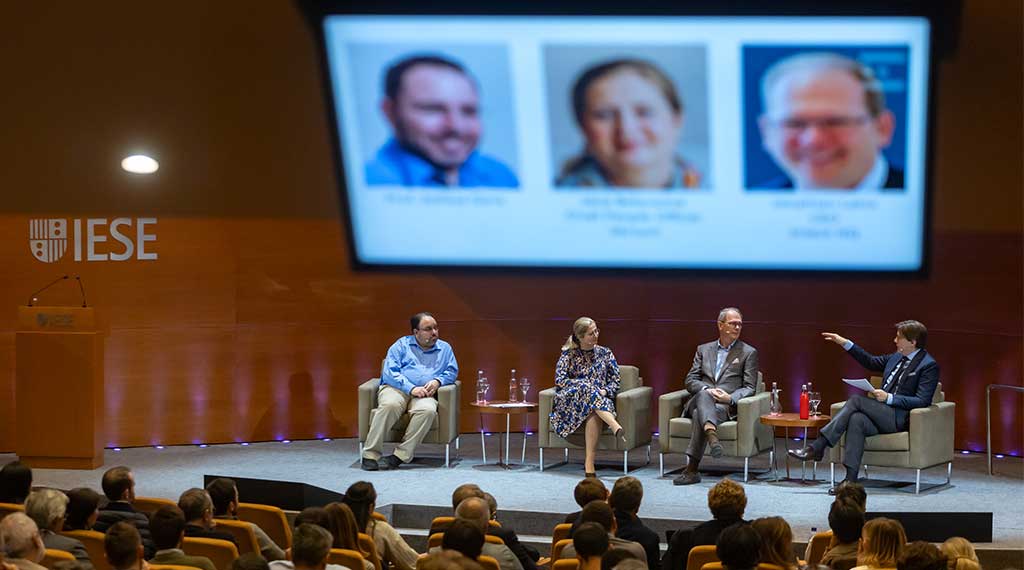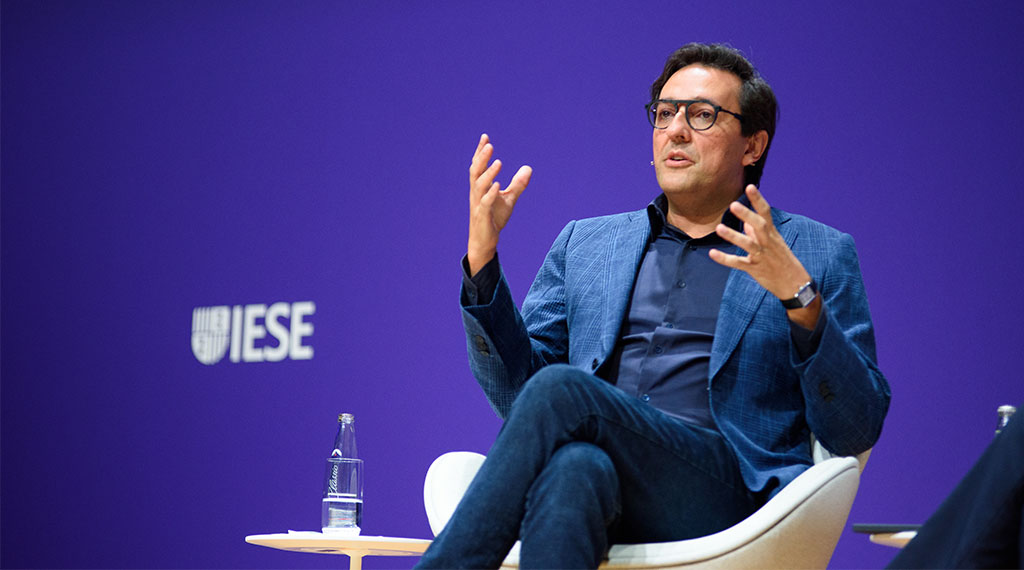Stories
AI may transform systems - if business leaders know how to manage it
Artificial Intelligence and the Future of Management Initiative holds first event
November 9, 2023

As artificial intelligence proves its growing potential, managers and business leaders must gain the understanding to put it to use for system-wide change in their companies, or risk using this transformational technology to simply refine current procedures.
IESE’s Artificial Intelligence and the Future of Management Initiative, led by academic director Prof. Sampsa Samila, held an event on the Barcelona campus, featuring keynote speaker Joshua Gans, a best-selling author and professor at the University of Toronto’s Rotman School of Management. A panel discussion included Jana Belyusova, Chief People Officer at Versuni, and Intent HQ CEO Jonathan Lakin.
The initiative is founded on the belief in the transformative power of AI and on the conviction that its impact must be positive. “We think that AI is fundamentally transformative,” Samila said. “It’s very important for us to try to work for the benefit of society at large but in particular those who are actively involved in companies, whether it’s employees, customers, suppliers or even competitors.”
But transformation does not come from using AI to autocorrect email responses, as useful as that is. Gans divides AI into three potential uses: point solutions, application solutions and system solutions.
Point solutions improve an existing procedure and can be adopted without changing the systems in which they’re embedded. An example of this is potential fraud detection by banks: these are predictions financial institutions have long made, but they can be done better and more accurately using AI.
Application solutions go a step further, enabling new procedures that wouldn’t be possible without the help of AI – but the basic system remains the same. For example, a traditional retailer may begin analyzing sales data to recommend new products and services to its customers.
But system solutions rewrite the rules, improving existing procedures or enabling new ones by changing the whole chain. An example of this is the taxi industry, in which AI-fueled navigation systems and mobile phones not only gave way to a new model of ride hailing such as Uber, but also obviated the fundamental skill required of taxi drivers – an encyclopedic knowledge of streets.
The first two solutions use AI to improve processes and productivity; the third transforms entire industries in the way the invention of electricity did. The first two reinforce existing systems; the third disrupts them entirely.
System-wide change hinges on strong leadership
At the moment, most business leaders have glimpsed the potential of AI, but are still unsure of what actions to take in their own companies. Any system-wide change will take time. “We’re in the between times. We’ve got great promise from the technology, great ability of seeing point solutions, but where the system-level innovations are is still not there,” Gans said.
Understanding the systems opportunities starts with identifying where your company creates value, where large data sets exist and how the industry as a whole may be transformed. For Belyusova, insights on customers gleaned from AI is at the heart of the AI strategy. “If we manage through this technology to be close to our consumers, we will beat our competitors,” she said.
Incorporating AI and data into Versuni’s activities and processes transformed the company’s operating model, job architecture and corporate culture. It required an ambitious upskilling program for employees, she said.
That puts new demands on leadership, requiring time, commitment and an understanding of AI, the panelists said. Strategies that have generally failed: immediately hiring an army of outside AI specialists, demanding quick results, hastily acquiring an AI startup in the hopes it will mesh with the company, and setting up a specialized AI division removed from the rest of the firm.
“It takes really bold leadership and a real desire to do something different,” Lakin said. “But it also takes something that I think is a skill that’s being lost now, which is a real skill of discernment and definition.”
Leaders must take a long-term vision of the transformation, Gans added. “It’s only with the continual management, the belief that you have to continually manage this problem and offer solutions and re-optimize and see if it’s all working well…that you’re going to be able to do it.”


